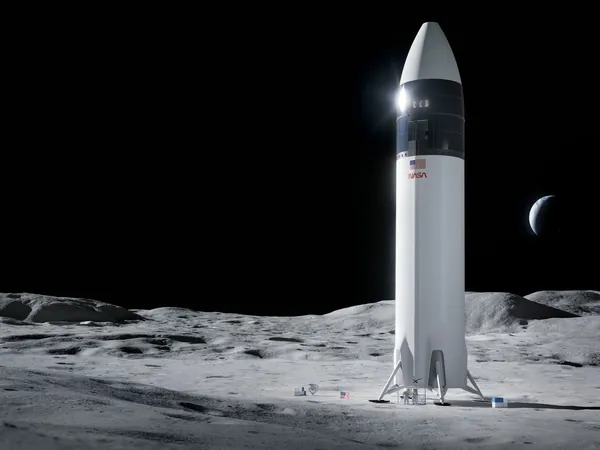
NASA Urges Next Administration to Stay the Course on Human Spaceflight Programs
2024-11-04
Author: Ling
NASA Urges Next Administration to Stay the Course on Human Spaceflight Programs
In a bold appeal made on October 30, a senior NASA official emphasized the crucial need for the next U.S. administration to uphold existing plans for human spaceflight, particularly the ambitious mission aiming to return astronauts to the Moon under the Artemis program. Jim Free, NASA's Associate Administrator, voiced his concerns during a luncheon at the American Astronautical Society's von Braun Space Exploration Symposium in Huntsville, Alabama, warning that altering the agency's goals could jeopardize U.S. leadership in space exploration.
Free highlighted the necessity for 'consistency in purpose,' arguing that such stability has been lacking since the Apollo missions. He insisted on the importance of adhering to the current roadmap, which serves as a precursor to future Mars missions. “We need to keep this destination from a human spaceflight perspective,” he stated, cautioning that deviations could lead to fragmentation of efforts, allowing other nations to surpass the U.S. in space capabilities.
While there has been a tacit agreement in recent government administrations to support the Artemis mission — initiated during the Trump era — the future of U.S. space policy has not been explicitly detailed by either leading presidential candidate. However, informal indications suggest both parties may favor continuity in space exploration. The Republican platform envisions a fortified near-Earth manufacturing industry, returns to the Moon, and partnerships with the commercial space sector. Conversely, the Democratic platform has articulated support for NASA and commitments to sending astronauts to both the Moon and Mars.
Adding complexity to the current landscape, former President Trump has alluded to an expedited timeline for human missions to Mars, advocating collaboration with Elon Musk's SpaceX. Trump remarked at a recent rally, “We will land an American astronaut on Mars,” signaling an aggressive ambition that aligns with Musk's aspirations but raises questions within the space industry regarding feasibility.
While Musk has indicated that SpaceX aims to launch uncrewed Starship missions to Mars by 2028, industry experts remain skeptical. Several technical hurdles remain before reaching that goal, including the need for orbital demonstrations and propellant transfer capabilities. Notably, these developments must also compete with the pressing timeline of the Artemis missions, particularly with Artemis 3's lunar landing set for late 2026, just before the next Mars launch window.
Furthermore, challenges related to human survival on long-duration missions to Mars must be addressed. Life sciences experts stress the necessity of adequate radiation shielding and specialized spacecraft designs to protect astronauts during their journey. James Logan, a former NASA flight medicine chief, underscored the engineering hurdles ahead for ensuring astronaut safety on such missions.
At the Huntsville conference, Free reiterated the importance of maintaining a clear focus on current objectives, echoing sentiments articulated by Wayne Hale, a former NASA shuttle program manager, who emphasized the dangers of cancellation and disruption in space missions. Developers must continue advancing technologies and practices to solidify America's position at the forefront of space exploration.
As the dialogue surrounding human spaceflight evolves, the stakes have never been higher for the U.S. to uphold its commitments and lead the charge into the next era of exploration, whether it be on the Moon, Mars, or beyond. Will the next administration heed this call to action, or will ambitious space dreams face uncertainty once again? Only time will tell.



 Brasil (PT)
Brasil (PT)
 Canada (EN)
Canada (EN)
 Chile (ES)
Chile (ES)
 España (ES)
España (ES)
 France (FR)
France (FR)
 Hong Kong (EN)
Hong Kong (EN)
 Italia (IT)
Italia (IT)
 日本 (JA)
日本 (JA)
 Magyarország (HU)
Magyarország (HU)
 Norge (NO)
Norge (NO)
 Polska (PL)
Polska (PL)
 Schweiz (DE)
Schweiz (DE)
 Singapore (EN)
Singapore (EN)
 Sverige (SV)
Sverige (SV)
 Suomi (FI)
Suomi (FI)
 Türkiye (TR)
Türkiye (TR)